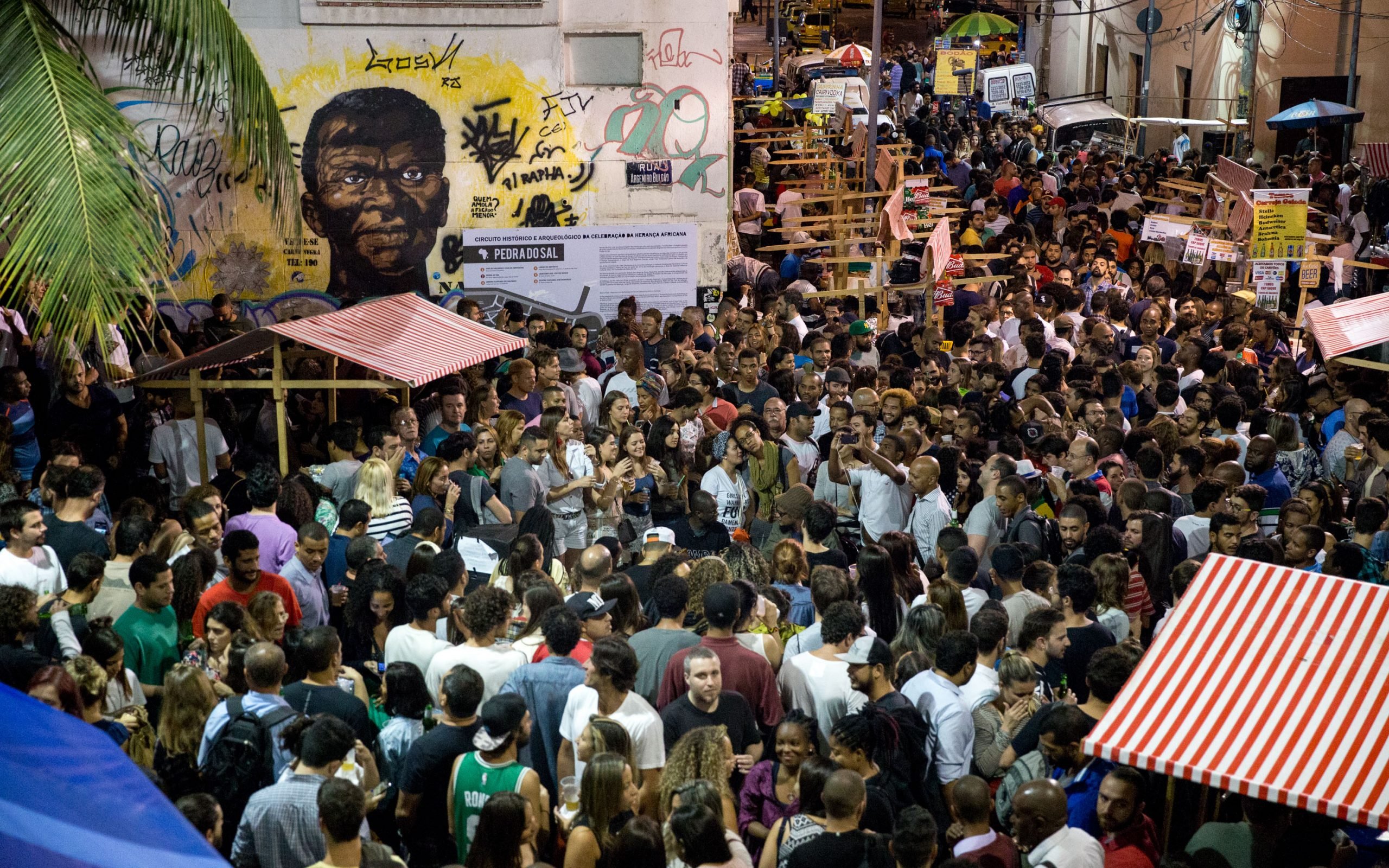RIO DE JANEIRO — In this city that made samba famous with colorful jeweled costumes and live music, the rhythm of samba music pumps through the streets on a nightly basis.
With a little help from coat hangers and some duct tape, costume designer Cory Thomas has replicated the vibrant colors and sounds of samba 6,000 miles away in Phoenix.
Thomas used the hangers and tape in 2009 to create a wire bra when she first started making samba costumes in the Valley.
Like most Phoenix locals, she had no idea that Arizona even had a samba scene until she encountered a group of dancers called Samba Performers, led by Angelique Starks. She contacted Starks and asked to her about taking classes.
“I fell in love with the music and the culture,” Thomas said. “I couldn’t afford classes then. I told Angelique, ‘I’ll perform for free, just let me learn from you.'”
Starks accepted her offer and seven years later the two are now business partners.
Thomas’s couture costumes sell for more than $1,200 and her experience as both a samba instructor and costume designer for Samba Performers has enabled her to make her passion for samba a way of life.
The self-made samba school of Arizona is based on the 80-year-old samba schools created in Rio. Those samba schools are what inspired people like Brazilian native Michelle Bailey to pursue samba as a profession.
Bailey, the founder of Spirit of Samba, a samba company in Orlando, Florida, believes the spotlight the Olympics brought to Brazil helped open the world’s eyes to samba.
“I believe everything good and bad going on in Brazil has brought a lot of attention to samba. With the attention, people start to see our culture and eventually learn about the spirit of samba,” Bailey said.
Born in Nilopolis, a small town in the state of Rio de Janeiro, Bailey has been samba dancing since she was 14 years old and grew up watching dancers from schools there rehearse for Carnival, which showcases the heart of Rio’s samba scene in late February.
The annual festival features huge costumes, parades, music and an opportunity for one dancer to earn the title “Queen of the Carnival in Rio de Janeiro.”
“I was always fascinated by the drummers and passistas (samba dancers),” said Bailey.
Bailey said the energy of samba is uniquely alluring.
“(People) experience it, feel it’s passion and it becomes addictive,” Bailey said. “I believe with as much as it has grown, that this is only the tip of the iceberg for samba.”
Thomas hopes that those returning from the Olympics in Rio are even hungrier for the Brazilian culture that she helped cultivate in Arizona through samba dancing.
“Hopefully they get a taste of samba and a taste of Brazil and expand it in Arizona,” Thomas said.
Bailey agreed.
“It attracts people to learn about who we are as a culture. Brazilian people are warm, friendly, and energetic,” Bailey said. “We have a great sense of humor – yes we can even make jokes of our own problems. And we really know how to turn a simple and small event into a large and amazing carnival. For all the events that I did in my life, I never met anybody that didn’t move or smile when they witnessed a good samba show.”
Starks, the creator of Samba Performers, said that the Olympics focused attention on the company’s dancers. In Arizona, Thomas dancers average four to seven shows a week.
“The Olympics is giving us a lot of work,” Starks said.
As the Rio Olympics brought increased attention to samba, the Phoenix scene is preparing for both a Brazilian festival in September as well as Rainha e Rei do Samba, a national samba competition held in Phoenix in early October.
The competition brings in samba professionals from Brazil and is attended by samba fans from across the U.S., Thomas said.
“The reason I started the competition was that I wanted to meet the community in the U.S. and bring samba to Phoenix,” Starks said.
